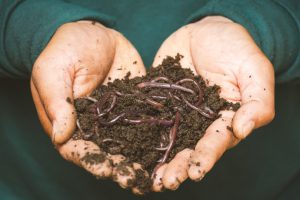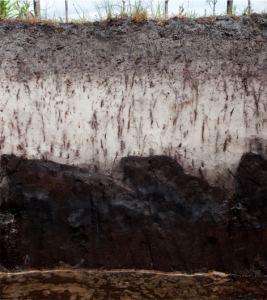By Carol Wyatt-Evens and Sarah Bostick
Gardening in Florida can be incredibly rewarding and incredibly frustrating, at the same time. If you are new to the region, you soon learn that gardening in the Sunshine State can quickly become a full-time job. While our subtropical climate is perfect for growing an abundance of different vegetables, fruits, and herbs, it also can present some overwhelming challenges.
We can help! UF/IFAS Extension Sarasota County agents and staff have created an online edible gardening resource center. The website features short videos from our 25-episode “Edible Gardening Series” webinars, along with blog posts and resources lists for episodes. Get help on an array of topics that befuddle many gardeners.
This week’s Question of the Week:
I still feel unconvinced that mulching my garden is worth the time and effort. What else can you tell me that might change my mind?
There are many reasons to keep bare soil covered in any garden. We often think of the things that mulch helps to prevent in a garden: weeds, erosion, soil from drying out too quickly, muddy soil from splashing onto plants, and overly hot soil that causes plants to wilt on sunny days. These are all very valuable services provided by a simple layer of mulch.
But mulch doesn’t just prevent things in a garden. Mulch is also the key to one of the most important functions on earth: soil formation.
The full story of how soil is formed is the topic of numerous textbooks and scientific publications, but at its core, the process of soil formation is simple and understandable. Here is what every gardener should know about soil:
There is an astounding diversity of color, texture, smell, and depth of s oil around the world. But pick up a handful of soil anywhere in the world and you will be holding something that is composed of the same four elements. Worldwide, all soil is composed of water, air, minerals, and organic matter. Worldwide, these four elements are even found in similar proportions. On average, soil is composed of 25% air, 25% water, 45% mineral, and 5% organic matter.
oil around the world. But pick up a handful of soil anywhere in the world and you will be holding something that is composed of the same four elements. Worldwide, all soil is composed of water, air, minerals, and organic matter. Worldwide, these four elements are even found in similar proportions. On average, soil is composed of 25% air, 25% water, 45% mineral, and 5% organic matter.
In much of Florida, the “mineral” part of soil is sand. If you would like to learn about Florida’s state soil, Myakka Fine Sand, and how it formed, this is a great resource.
So, in most of Florida, soil is composed of air, water, sand and organic matter. But what is organic matter?
Simply put, organic matter is anything that is or once was alive.
Organic matter is a tree at every stage of its existence from seed to mature to freshly felled by a storm to fully decomposed and turned back into what we think of as soil. Organic matter is grass eaten by a deer that digests the grass and deposits manure on the surface of the soil as it walks through a forest. It is the dung beetles that push the deer’s manure into holes in the earth. It is the microbes and fungus that consume the manure. It is the waste products of those microbes. And on and on.

If you have ever studied a food web, you know that a food web is complex and may look something like this: a cricket eats grass, a frog eats the cricket, a bird eats the frog, a fox eats the bird. But did you know that the food web extends to the soil under our feet? There are more microorganisms in a teaspoon of healthy soil than there are human beings on Earth (learn more here). And those microbes are actively breaking down things that were alive into a stable form of organic matter that feeds plants.
Even though organic matter is only a small percentage of the total volume of soil, it is a vitally important part of soil. Without organic matter, soil simply isn’t soil.
Without organic matter the world we live in would be unrecognizable.

To understand how mulching your garden fits into soil formation, we need to explain one more thing that is true of all soil around the world. That thing is layers, or horizons, as they are known in the science world. All soil is composed of distinct layers that are very obviously different from one another as you dig further and further down into the ground. Scientists who study soil frequently dig soil pits, making the layers of the soil visible.
Most people think of soil as having two layers: topsoil and sub-soil. But most soil is composed of four or more layers. And in most of the world, the top layer of soil isn’t topsoil, it is decomposing organic matter. That decomposing organic matter is broken down by microbes and fungi and becomes nutrient-rich topsoil.
In a forest, the top layer of soil is mostly composed of fallen leaves and branches, mixed with animal manure, animals that have died, and mushrooms and other fungus. In a meadow or pasture, the top layer of soil is mostly composed of dead grasses and manure. As the top layer of soil decomposes, the nutrients held in those leaves, grasses, animals and manure are released and taken back up by living plants, continuing the cycle of life.
In a garden, mulch is that top layer of soil. Mulch is the organic matter layer that is decomposed by abundant microbial life, becoming new topsoil rich in organic matter. As a gardener, you are actively building new soil every time you add mulch to your garden.
Mulch is one of the mightiest tools in any gardener’s toolbox. It prevents weeds, erosion, soil from drying out too quickly, mud from splashing onto plants, and overly hot soil that causes plants to wilt on sunny days. And perhaps mightiest of all, mulch is creating new soil right where you need it: in your garden.
The Edible Gardening Series and blog series is a partnership between the following UF/IFAS agents and Sarasota County staff:
- Sarah Bostick, Sustainable Agriculture Agent
- Carol Wyatt-Evens, Chemicals in the Environment Agent
- Mindy Hanak, Community & School Gardens Educator
- Kevin O’Horan, Communications Associate
 0
0
